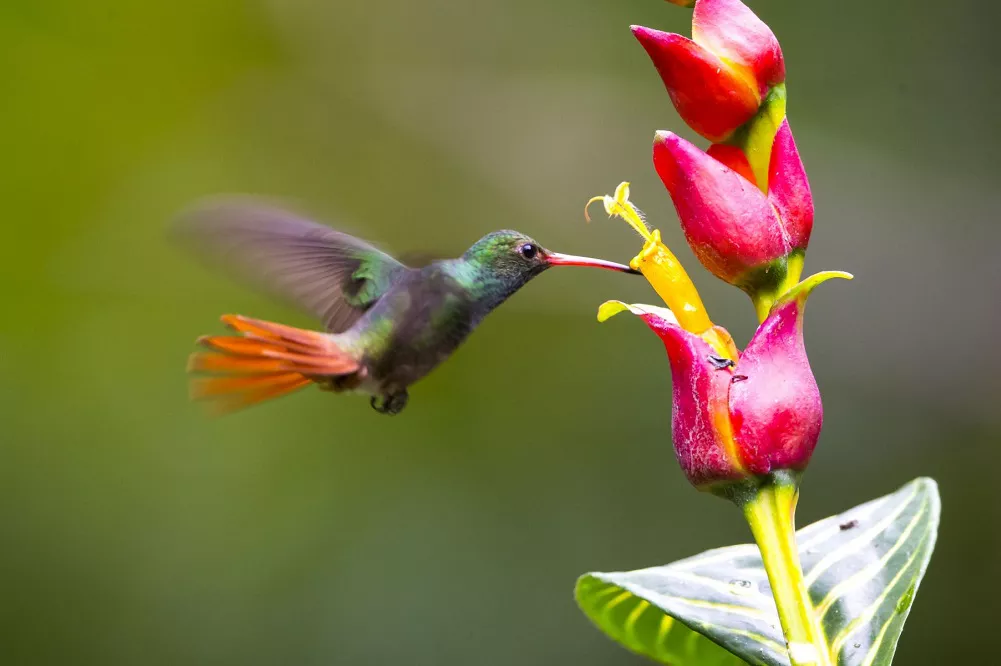Hummingbirds are nature’s tiny aerial marvels, known for their dazzling colors, remarkable agility, and ability to hover in mid-air. These delightful creatures capture our imagination and admiration with their swift flight and delicate beauty. However, have you ever wondered where these remarkable birds find respite at night? In this article, we unravel the secrets of where do hummingbirds sleep and explore their unique sleeping habits.
Sleeping Habits of Hummingbirds:
Hummingbirds have evolved distinct sleeping habits that are unlike those of most other bird species. Rather than seeking shelter in nests or roosting on branches, hummingbirds enter a state of torpor during their sleep. Torpor is a state of deep rest characterized by a significant decrease in metabolic rate and body temperature, allowing hummingbirds to conserve energy during periods of inactivity.
Selecting Nighttime Roosting Spots:
Hummingbirds carefully select their nighttime roosting spots, which provide them with security and protection. They often choose dense vegetation or foliage, such as trees, shrubs, or vines, to create a sheltered environment. The thick foliage shields them from potential predators and provides a suitable microclimate, helping to maintain a stable temperature and reduce exposure to wind and rain.
Hanging, Perching, or Nesting?
Hummingbirds employ different sleeping positions depending on the species and available roosting options. Some hummingbirds, such as the Ruby-throated Hummingbird, use a hanging position during sleep. They suspend themselves upside down by grasping onto a branch or twig with their feet, using their strong leg muscles to maintain their grip. This unique sleeping posture helps conserve energy and provides a secure perch.
Other species, like the Anna’s Hummingbird, exhibit a perching behavior when they sleep. They settle on a secure branch or twig, often in a protected area within dense vegetation, and maintain an upright position. This allows them to rest while keeping their balance and be ready for quick takeoff when necessary.
In addition to hanging or perching, some hummingbirds incorporate elements of nesting into their sleeping habits. They may sleep within their nests, which are typically constructed from plant fibers, spider webs, and other soft materials. These nests offer additional protection and insulation during the night, enhancing the hummingbirds’ comfort and security.
Social Roosting:
Certain hummingbird species exhibit social roosting behavior, where multiple individuals gather and sleep in close proximity to one another. This behavior is observed in some Anna’s Hummingbirds and Rufous Hummingbirds, among others. Social roosting provides benefits such as increased warmth and protection from predators through collective vigilance.
Migration and Roosting
Migration is an integral part of hummingbird life cycles. During their long journeys, hummingbirds require adequate rest to replenish their energy levels. As they migrate, hummingbirds seek out roosting locations that provide safety and resources. This may include wooded areas, coastal habitats, or even specific stopover sites dedicated to hummingbird conservation. Identifying and protecting these critical roosting areas is essential for supporting successful migration patterns.
Additional Factors Influencing Roosting Spots:
Aside from safety considerations, hummingbirds also take other factors into account when selecting roosting spots. These factors may include the proximity to reliable food sources, the presence of suitable nesting sites, and the availability of favorable microclimates. By strategically choosing roosting spots, hummingbirds optimize their chances of survival and successful reproduction.
Conclusion:
Hummingbirds, with their remarkable adaptations and unique sleeping habits, continue to fascinate and inspire. While other birds seek shelter in nests or roost on branches, hummingbirds enter a state of torpor and carefully select secure roosting spots within dense vegetation. Whether hanging upside down, perching upright, or incorporating elements of nesting, these tiny aerial marvels find innovative ways to rest and conserve energy. Exploring the sleeping habits of hummingbirds not only deepens our understanding of these extraordinary creatures but also highlights the remarkable diversity and ingenuity found in the natural world.


 Facebook
Facebook  Instagram
Instagram  Youtube
Youtube 